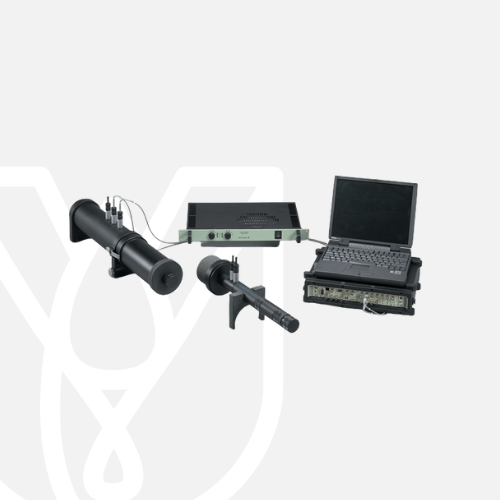
Type 4206
Impedance Tube Kit (50 Hz – 6.4 kHz)
Transmission loss tube kit and two impedance tube kits solution for measuring the acoustical properties of noise control materials.
These kits consist of precision testing tubes that are equipped with microphones and sound sources.
Material samples are inserted into the tube. A loudspeaker in the tube then emits precisely quantified sound, and the microphones measure the sound pressure level at specific locations along the length of the tube.
Our PULSE software then calculates the normal incident acoustic properties of the material based on frequency response functions measured between the various measurement locations.
These kits help you determine sound absorption coefficient and surface impedance by making measurements and calculations that meet the standards ISO 10534-2, ASTM E1050 – 12, and transmission loss ASTM E2611 – 17.
USE SCENARIOS
- Researching and developing noise control products by characterizing acoustic material properties and benchmarking competitive products
- Designing acoustic comfort in aircraft and vehicle interiors, by selecting optimal acoustic treatments and barriers
- Testing specified material characteristics and verifying material compliance with regulations before materials are incorporated into manufactured assemblies such as components
- Validating and calibrating computational methods such as acoustical modeling
THREE DIFFERENT TESTING TUBE TYPES
Each one of our kits is optimized for specific parameters and methods.
Two-microphone transfer-function method:
- Impedance Tube Kit (50 Hz – 6.4 kHz) Type 4206
- Impedance Tube Kit (100 Hz – 3.2 kHz) Type 4206-A
Four-microphone transfer-function method:
- Transmission Loss Tube Kit (50 Hz – 6.4 kHz) Type 4206-T
See the product data for more information about each specific kit.
MATERIAL CHARACTERISTICS
Whether materials are intended to absorb airborne sound or reduce airborne sound transmission, the acoustic designer or acoustician needs to know the effects of the acoustic materials. A material sample, or coupon test, is a quick and convenient method.
The impedance tube, or standing wave tube, guarantees highly reproducible testing conditions. Prior to testing, the signal-to-noise ratio (SNR) can be determined at each microphone position to ensure accurate results.
The acoustic characteristics of materials are determined in terms of absorption, reflection, impedance, and transmission loss.
CAPABILITIES
- Horizontal mounting of orientation-sensitive materials
- Vertical mounting for simulation of measurements on hanging ceilings
- Wall-mountable
- Determines normal incidence parameters
MATERIAL TESTING APPLICATIONS
Early in the development process of vehicle interiors and aircraft interiors, designers aiming for acoustic comfort need to predict what the acoustical impact will be of components such as trim lining, headliners, seats, and multi-panel systems.
This hardware and its associated software provide input to analytical and numerical tools for the prediction of the sound field in acoustic cavities such as vehicle cabins and aircraft cabins. These tools include finite element modeling (FEM) and the boundary element method (BEM).
Uses
| Type 4206 | Type 4206-A | Type 4206-T | ||
| Frequency Range | 50 Hz – 1.6 kHz | • | • | |
| 100 Hz – 3.2 kHz | • | |||
| 500 Hz – 6.4 kHz | • | • | ||
| Parameters | Acoustic impedance | • | • | • |
| Acoustic admittance | • | • | • | |
| Reflection coefficient | • | • | • | |
| Sound absorption coefficient | • | • | • | |
| Transmission loss coefficient | • |
Features
- Measurements based on the two-microphone transferfunction method according to ISO 10534–2 andASTM E1050–12 international standards for absorption coefficient and ASTM E2611–17 for transmission loss
- Horizontal mounting of orientation-sensitive materials simulation of measurements on hanging ceilings
- Wall mountable
- Part of a complete acoustic material testing system featuring Brüel & Kjær’s analyzer system
Application
| Standard | Tube Kit | Frequency Range |
| ISO 10534-2 | Type 4206 | 50 – 6400 Hz |
| ASTM E1050-12 | Type 4206 | 50 – 6400 Hz |
| ASTM E1050-12 | Type 4206-A | 100 – 3200 Hz |
| ASTM E2611-17 | Type 4206-T | 50 – 6400 Hz |
Benefits
- Normal incidence parameters are determined
- Fast and accurate measurements
- Large frequency range achieved using tubes of various diameters and microphone spacings
- Use of small samples
- Easy to assemble and disassemble
